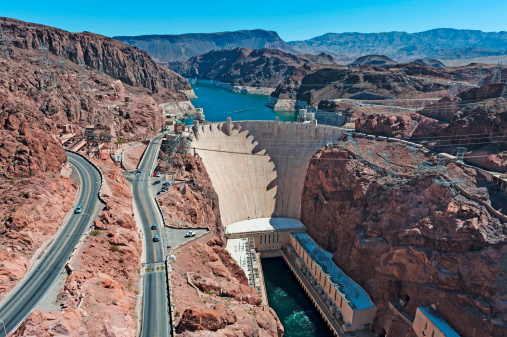Water and Hydroelectric Power Sharing
Author: COMAP

Background
For centuries, people have constructed dams across rivers and streams to hold back water to create reservoirs as a means of managing water supplies. These reservoirs store water for a variety of uses (e.g., agriculture, industry, residential), provide an area for leisure and recreation (e.g., fishing, boating), assist in preventing downstream flooding, and feed water to turbines that generate electricity. Hydroelectric power (hydropower) is electricity produced by these turbines as they convert the potential energy of falling or fast-flowing water into mechanical energy.
With climate change, the volume of water from sources feeding dams and reservoirs is decreasing in many areas. Consequently, dams may not be able to meet the demands for water in these areas. Additionally, low water flow decreases the amount of electricity generated from hydroelectric plants resulting in disruptions of the power supply in these areas. If the water level in the reservoir behind the dam is low enough, hydroelectric power generation stops.
Natural resource officials in the U.S. states of Arizona (AZ), California (CA), Wyoming (WY), New Mexico (NM), and Colorado (CO) are currently negotiating to determine the best way to manage water usage and electricity production at the Glen Canyon and Hoover dams to address these competing interests. Hundreds of years of previous agreements continue to impact current water management regulations, policies, and practices today. The agreements allocate more water from the Colorado River system than is present in the system. It is likely that the system continues to work because some users do not take their full allocations. If drought conditions continue in the Colorado River basin, the water volume at some point will be insufficient to meet the basic water and generated electricity needs of stakeholders. Consequently, a rational, defensible water allocation plan for current and future water supply conditions is critically important.
Problem Download

Mathematics Topics:
Application Areas:
You must have a Mathmodels Membership to download Student Papers and Commentary.
If you're already a member, login here.